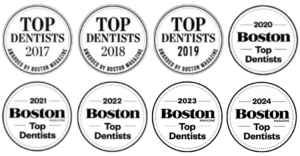Cosmetic Dentistry 101: Enhancing Your Smile
Welcome to Lexington Smile Studio, where the power of a beautiful smile never goes unnoticed. Known nationwide for specializations in Tongue Tie, Lip Tie, CO2 Laser Release, LANAP, and LAPIP procedures, our primary focus is on cosmetic dentistry. This blog post will take you through a quick tour of our cosmetic dentistry services, helping you understand how to leverage them to create your perfect smile.
What Is Cosmetic Dentistry?
Cosmetic dentistry, as the name implies, focuses on improving your smile’s aesthetics. This umbrella term covers a range of procedures that correct common issues such as crooked, stained, or missing teeth.
Common Cosmetic Dentistry Procedures
From teeth whitening to dental implants, cosmetic dentistry comprises various procedures aimed at enhancing your smile. Let’s dissect a few of them:
- Teeth Whitening: A quick and safe way to eliminate discolorations and bring out the natural whiteness of your teeth.
- Dental Veneers: Thin porcelain shells that cover the front of your teeth, masking stains and chips effectively.
- Dental Implants: A permanent solution for missing or severely decayed teeth that look and function just like natural teeth.
When Do You Need Cosmetic Dentistry?
Deciding if cosmetic dentistry is right for you boils down to personal goals. Some motivations include wanting a brighter smile, improving self-confidence, or finally fixing that crooked tooth that’s always bothered you.
Benefits of Cosmetic Dentistry
Cosmetic dentistry goes beyond just aesthetics. Here are a few benefits you can expect:
- Improved Oral Health: By fixing dental issues, you guard against future oral health problems.
- Enhanced Self-Esteem: A stunning smile can boost your confidence and ensure you never shy away from social situations.
- Better Total Health: Oral health has a strong link to overall health. By taking care of your teeth, you are taking care of your body.
Why Choose Lexington Smile Studio?
Lexington Smile Studio blends expertise, technology, and a patient-oriented approach to deliver exceptional cosmetic dental solutions. We aim to enhance your dental journey, ensuring all your questions are answered, and your needs are met.
Conclusion: Have a Smile Makeover from Our Cosmetic Dentist
At Lexington Smile Studio, we believe everyone deserves a healthy and attractive smile. Whether it’s a minor tweak or a major makeover, our variety of cosmetic dentistry services are designed to give you the smile you’ve always dreamed of. Trust us – your journey to a better smile is just one phone call away.
Ready to start your transformation with Lexington Smile Studio? Your journey to better oral health and a beautiful smile begins with a consultation at Lexington Smile Studio, where dental excellence meets personalized care. Schedule your appointment today with our cosmetic dentist, and let us guide you towards your best smile.



